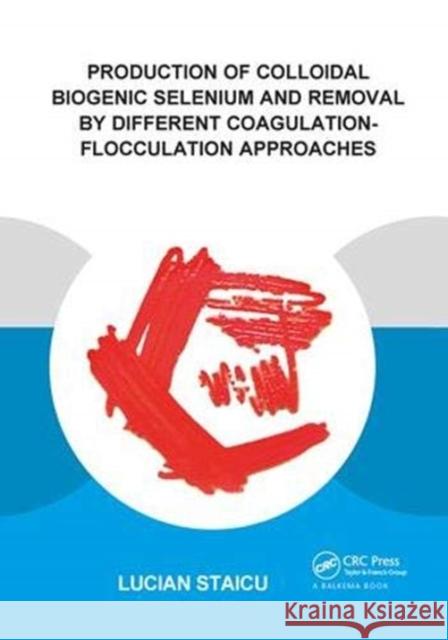Production of Colloidal Biogenic Selenium and Removal by Different Coagulation-Flocculation Approaches » książka
Production of Colloidal Biogenic Selenium and Removal by Different Coagulation-Flocculation Approaches
ISBN-13: 9781138373327 / Angielski / Twarda / 2018 / 148 str.
Production of Colloidal Biogenic Selenium and Removal by Different Coagulation-Flocculation Approaches
ISBN-13: 9781138373327 / Angielski / Twarda / 2018 / 148 str.
(netto: 338,84 VAT: 5%)
Najniższa cena z 30 dni: 337,45 zł
ok. 16-18 dni roboczych.
Darmowa dostawa!
Selenium (Se) is a chemical element of concern due to its toxicity and increasing anthropogenic release to the environment. Se oxyanions, selenite and selenate, are water-soluble, bioavailable and toxic, whereas elemental selenium, Se(0), is solid and less toxic. Nevertheless, Se(0) is potentially harmful as particulate Se(0) has been reported to be bioavailable to bivalves, to fish and also prone to re-oxidation. In the current work we investigated the reduction of selenite and selenate using pure and mixed microbial cultures. A novel strain of Pseudomonas moraviensis showing high Se tolerance was isolated, classified and characterized for the first time. Biogenic Se(0) shows colloidal properties due to its nanosize scale and negatively-charged biopolymer coating. To address the need for efficient solid-liquid separation of biogenic Se(0) prior to environmental discharge, we tested and compared several physical-chemical separation methods. Centrifugation and filtration can be efficiently used for Se(0) separation but they are not feasible at the industrial scale due to prohibitive costs. Alternatively, chemical coagulation by metal salts, e.g. aluminum sulfate and ferric chloride, resulted in high removal rates around 90%. Electrocoagulation reached the highest colloidal Se(0) removal efficiency of 97% when using iron electrodes. In conclusion, biogenic Se(0) must be removed in a biological post-treatment step and several approaches described in this work could be successfully used.











